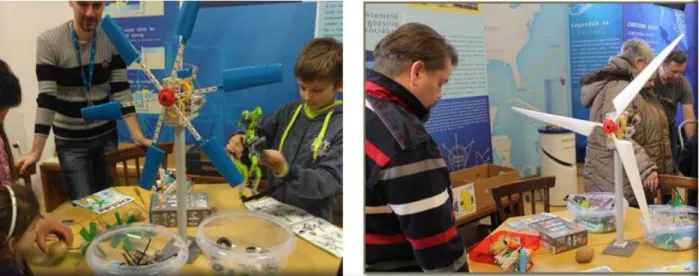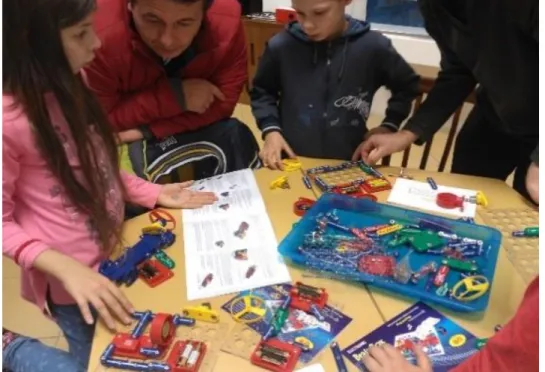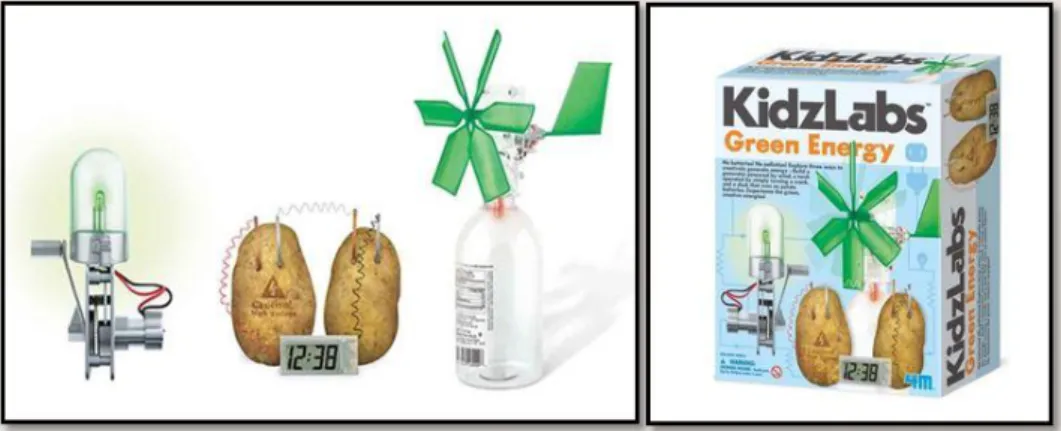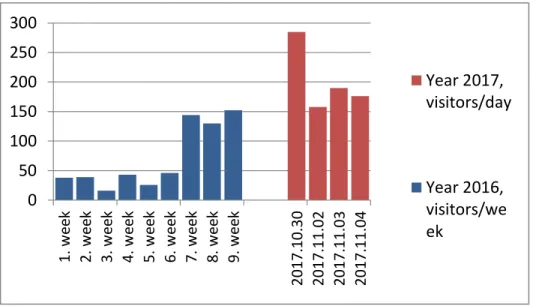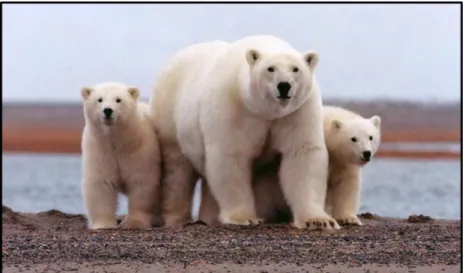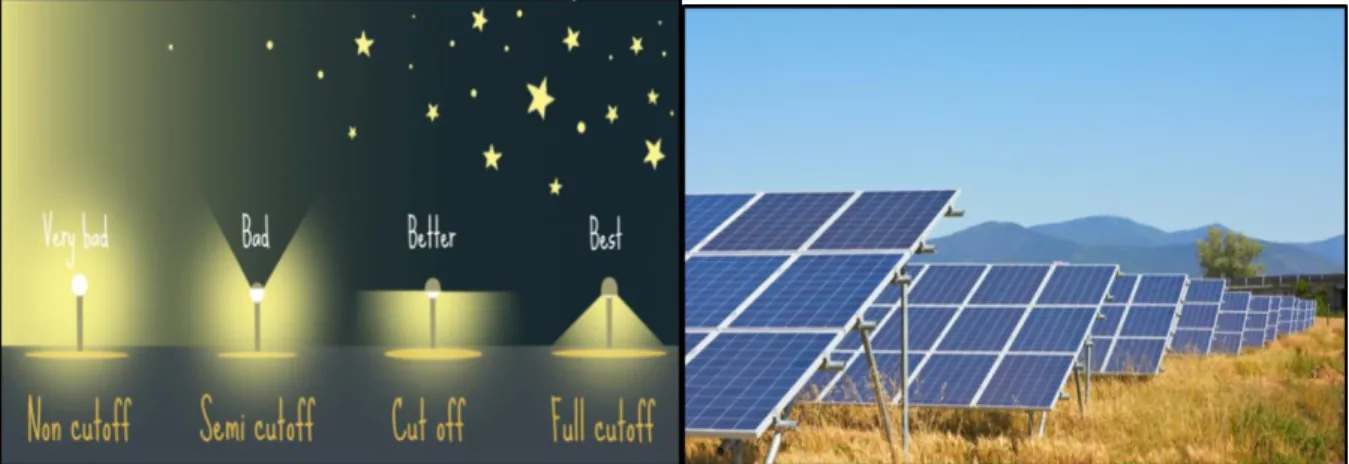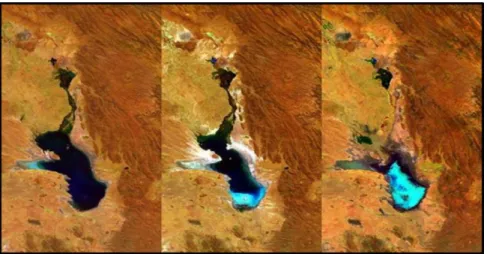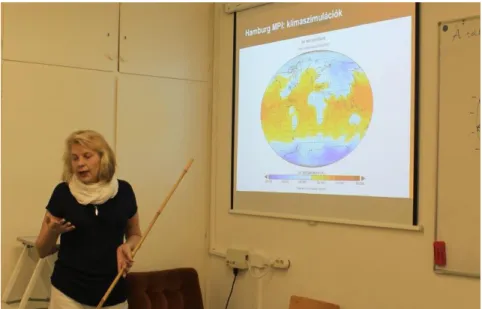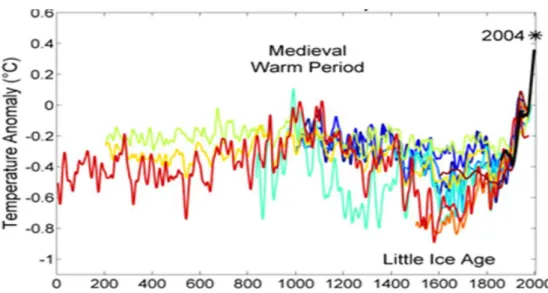http://jates.org
Technical and Educational Sciences
Engineering, Vocational and Environmental Aspects ISSN 2560-5429
Volume 9, Issue 1
doi: 10.24368/jates.v9i1.67
http://doi.org/10.24368/jates.v9i1.67
Edutainment in the Magic Tower: Environmental awareness as a lifelong learning process
Izabella J. Benczika
aEszterházy Károly University, Eszterházy tér 1, 3300 Eger, Hungary, benczik.izabella@uni-eszterhazy.hu
Abstract
The type and nature of the environmental problems we are facing currently require an adaptive environmental education that is a lifelong learning process rather than a matter of formal schooling. The Magic Tower Science Career Orientation Center and Museum at the Eszterházy Károly University Eger has been committed since its foundation to promote lifelong learning, and establish, in general, an atypical, informal, and non-formal science educational culture in Northern Hungary. One of the target areas of the Tower are the current environmental issues faced by the humanity. In the recent years, the Tower has launched several self-paced and inquiry-based science programs that intended to raise motivation towards environmental sciences, and to create responsible individuals capable to identify environmental issues, engage in problem solving, and take efficient action. These programs were aimed at audiences of different age and education level, ranging from preschool children, through secondary school students, to parents and non-specialized researchers. In the present communication, we summarize some of these activities, along with their achievements.
Keywords: science centers; inquiry-based learning; lifelong learning; environmental education;
1. Introduction
Informal learning settings such as science centers and museums have been identified as opportunities to enhance students' knowledge and motivation in science, and to optimize the connection between science and everyday life (Martin, 2016; Salmi, 2016; Kárpáti, 2013). Such institutions are particularly successful in seeding and keeping alive environmental awareness that is more a matter of lifelong learning rather than of formal schooling (Vörös, 2016). The present study assesses the role of the self-paced informal environmental education programs - aimed at different age groups - in enhancing knowledge, self-efficacy, motivation and responsibility.
The stage of our educational programs is the Magic Tower of Eger, a functionally integrated unit of the Eszterházy Károly University, located in the former observatory tower of the 250 years old building. Because of the historical importance of the instruments and artifacts in its holdings, the Tower is part of the Hungarian cultural heritage, and it served as a place for local
history research over many decades. In 2006 however, Professor József Vida envisioned the opening of this historical site for the general public as an interactive, learning environment for visitors and students. With the help of his colleagues from the physics department, he founded a new interactive room, the Magic Room, and the tower has been opened as museum and science center with its name changed to Magic Tower (Vida, 2018). In contrast to the other science museums of the world, professor Vida designed programs that were aligned along the principles of guided discovery learning. He insisted that in each exposition room, a guide should present experiments and the functioning of the instruments at regular time intervals (10-minute presentations at every half an hour), after which the visitors were given enough time to explore alone the presented experimental setups and instruments (Vida, 2016).
Presently, the tower still works according to this principle as a Science Career Orientation Center, and plays important role both in informal learning in Hungary, and in directing students towards science careers. The mission adopted by the tower is to establish an atypical, informal, and non-formal educational culture in Northern Hungary (Benczik, 2017) that uses play and entertainment as tools of education (i.e. ‘edutainment’). Self-paced, play- and inquiry-based activities, hands-on experiments, interactive experimental shows constitute the edutainment list offered by the tower.
In the recent years, the Tower has launched several science programs that intended to raise motivation towards environmental sciences, and to create responsible individuals capable to identify environmental issues, engage in problem solving, and take efficient action. Since the visitors of the tower come from very different age groups and different educational backgrounds, these recent activities were also differentiated according to the specific needs of the different age groups. In the present communication we will discuss some of our newest activities, namely:
science playhouse and science family matinee series (Benczik, 2017)- offered to kindergarten and elementary school children and their parents;
the online competition - organized for secondary school students (7’th grade in Hungary);
scientific presentations and experimental shows - held for high-school students, adults, parents, university students, and non-specialized researchers.
2. Science Playhouse
The well-known disinterest of today societies towards science provoked serious reactions on all levels. The European Science Foundation called to life the Science in Society action (ESF, 2012), which keeps offering great financial support to STEM activities (EC, 2007; EC, 2014).
The Hungarian educational system is also changing by developing a science-as-practice national educational curriculum (TPI, 2016), and introducing alternative manuals - steps that are all aimed at school-aged children. The behavior of school-aged children observed in the Tower, however, suggested that middle school age and adolescence are too late for awakening fascination for science. These children show already a general resistance against learning, poor to moderate interest towards science, and a lack of thirst for new knowledge (Kos, 2016).
Younger (5-6 years old) children in turn, are still driven by their inborn curiosity, fascinated by anything unknown, and extremely susceptible to every piece of knowledge about the world surrounding them. This observation motivated us to turn our focus to kindergarten age children, and launch a science playhouse program for them (Benczik, 2017).
1.1. Short history of the science playhouse
In 2016 November when I joined the ongoing activities at the Magic Tower, I proposed and organized a science playhouse program in the tower based on my German experiences. German kindergartens and elementary schools incorporate regular visits to different science centers in their educational agenda to promote scientific literacy among children. Besides the fact that such forms of informal learning raise motivation, promote creativity, and confer technical skills to children (Stannard, 2001), longitudinal studies have also proven their particular efficiency in keeping alive students’ interest and belief in science matters on the long term (Suter, 2015). In Eger, such scientific sites are completely missing, in contrast to the numerous cultural opportunities for children that have a dominant presence in the life of the city. To fill the gap, my main idea was to build an appealing, family friendly scientific facility in the Tower where we can offer a program package according to a pre-determined schedule on regular time intervals.
The program package consisted of free play with educational toys, combined with a 30-minute frontal experimental demonstration. Professor Vida supported the idea with full involvement. I interviewed a few parents about the topics they were interested in, and robotics, renewable energies, and construction kits came up in the first three places. The playhouse programs were launched in the Advent period preceding Christmas. Professors J. Vida and Z. Murányi (presently director of the Tower), colleagues G. Zoller, M. Madarassy, and J. Misz helped me out with the frontal experimental shows.
The first playhouse sessions took place in the afternoons as afterschool programs, and they were open both for classes and families. The attendance of these sessions was way below our expectations. The afternoon did not seem to be a convenient time neither for families nor for classes because of the variable school-day times at different schools, and the usually overloaded
schedules of the students. We also felt some skepticism coming both from parents and educators.
Since in Hungary neither teachers nor parents were early childhood educated, they had difficulties accepting the concept of a playhouse as a form of education. We got, however, very positive feedback from those who attended the sessions. Almost all of our visitors, after learning what it is about, came back and attended all the other sessions without even missing a single one.
From January 2017 our playhouse sessions were offered only on weekends. To engage families and parents, we transformed it into an opportunity for multigenerational weekend programming. A 30-minute planetarium show was also added to the program package. In this way, we created the so called Science Family Matinee series in the form in which it runs (occasionally) until today.
1.2. Structure of the science playhouse.
We opened the playhouse in a big room of the tower where we installed several round tables so that the children could work in groups. On some tables, we displayed selected construction kits grouped by topics, along with manuals and instructions. On other tables, we provided play- based and hands-on experimental setups. The children could play independently in their own rhythm and experiment with the toys, but for those who preferred to be guided in their work, the manuals gave suggestions and clear instructions.
Figure 1 Two different models of wind turbines constructed in the science playhouse
On the Renewable energies table we displayed the Wind Energy Science Kit (provided by Kosmos) that allowed construction of a miniature, but really working wind turbine. The turbine had two working modes: in one mode, it transformed mechanical energy (that of the wind, mimicked in our case by a simple vacuum cleaner) to electric power (demonstrated by a small LED lamp that lighted up). In the other mode, the turbine was
powered by batteries and produced mechanical energy (i.e. operated the wheel). The kit scored high points among our other kits for educational value and simplicity; it had an easy to follow experimental manual and assembly guide.
The question How electric energy can power a car was addressed on the table with Brainbox Electronic kits. This kit has easy-to-handle and durable parts and it allows construction of a huge amount of electric and electronic circuits. Children can operate wheels, light up lamps, test magnetic sensors, build an alarm, produce spooky space war sounds by using only very few elements. For its high educational and motivational value and for enhancing creativity, in England the kit has been introduced in the Science National Curriculum, and it is widely used in formal schooling for grades 1 and 2.
Figure 2. Children and adults experimenting self-autonomously with the Brainbox Electronic kit in the science playhouse
On the Green Energy table (Green Energy kit provided by KidzLabs), children can explore experimentally different ways to produce electric energy. The potato clock, for instance, introduces children to green science. A potato clock runs by converting chemical energy into electrical energy, which is then used to power a clock. The potatoes, in combination with zinc and copper strips act as a battery. Most people are not aware that this is possible, which is what makes it so interesting. The energy comes from the chemical change in the zinc when it dissolves inside the mild phosphoric acid content of the potato. The energy does not come from the potato itself. The kit also contains small
wind turbines and dynamos with little LED lamps attached to them that indicate immediately that mechanical energy has been transformed to electric current.
Figure 3. The Green Energy kit contains dynamos, wind turbines, and potato clocks
The free play in the playhouse was followed by a frontal, but interactive experimental presentation given by the teachers of the University. The presentations were adjusted to the specific needs of the young children (reduced time, simple explanations, attractive experiments presented in an exciting manner – sometimes framed as a fairy tale). The topics included environmental physics, effects of radiations, interesting properties of water and air, atmospheric pressure and vacuum, atmospheric currents and winds, phenomena driving the climate, and other concepts and phenomena that occur in the children’s everyday life.
Figure 4. Prof. József Vida presenting phenomena in vacuum (left picture), and a demonstration by József Misz on damages caused by IR radiations (right picture).
1.3. Conclusions and achievements
We can conclude in general, that the activities offered in our science playhouse fulfilled the cognitive, behavioral, and emotional engagement needs of the children. Not only kindergarten children, but also older siblings, and even adults engaged in the constructions and experiments with full involvement. Children appreciated the opportunity to get a look behind the scenes of science (opportunity available only to older students so far), and developed immediately an aspiration to participate further in similar activities, - a point that shows that early childhood education is indeed needed and welcomed in Hungary.
The second observation underpinned the significant role of free play in education, and the fact that directed free time and directed programs cannot replace free play (Dewar, 2008;
Stannard, 2001). The errors and mistakes made by children during experimenting with their own hands promoted I-can-do-it attitude, enhanced self-confidence, and most importantly developed cooperative behavior. Children who met for the first time in their lives helped each other with advices, instructions, and solving each other’s problems.
We also noticed that planning and executing alone a task (that was needed in the playhouse) promoted intrinsic motivation and led to deeper engagement than simple listening to a presentation, or watching an experiment. For instance, we could compare children experimenting with our Bermuda cylinder (where they simply had to hit a button to operate the experimental setup, and observe passively what happens), to those children who made experiments with an alarm circuit (where they needed to design and build the setup prior to running the experiment itself). While children watched the first experiment only for a couple of minutes, they were engaged in the second activity for hours.
As for the sensitization of children on environmental issues, we noticed the following:
The renewable energies section of the playhouse stimulated students’ interest in environmental matters, it provoked quite often discussions about fossil vs. renewable energies, and awakened in children a noticeable aspiration to become responsible stewards of the Earth’s resources.
The wind turbine kit developed an understanding of the physical phenomena behind energy production; children acquired a thirst for more knowledge, and also developed an ability to pay attention to the happenings around them (for instance, to efforts to save energy at home, at school, and so on).
We noticed gains in content knowledge recall (solar and wind power usage in energy production, concepts like pressure, vacuum, temperature, knowledge about air, currents, winds), especially after the frontal experimental demonstrations.
We observed improvements in children’s’ beliefs that environmental issues are relevant to our everyday life, and an increased environmental awareness and motivation (towards selective material recycling, for instance) in those who attended the playhouse.
Figure 5. Evolution of the number of visitors from 2016 to 2017. Please note that blue columns represent weekly loads, while red columns show the daily traffic.
The benefits of the science playhouse were, of course, twofold. The museum also profited from them in what regards the number of visitors. After the first period of disinterest, the playhouse became very popular. Visitors enjoyed the lively and challenging experience offered by the playhouse, as compared to the sterile, passive and just visual inspection of the expositions, and started to plan their visits on those dates when the playhouse was also open. On these days the number of visitors grew very high, on some occasions approached the maximum capacity of the tower. The playhouse carried a highly attractive power, visitors found it easier to absorb the message transmitted by the museum when it was linked to manual activity and direct inquiry.
3. Online competition as an educational tool
E-learning and online materials represent a very good opportunity for disseminating environmental sensitivity on large scales. E-learning methods have got an overwhelming preponderance in education in the last decades, mainly because today’s students have changed incrementally from those of the past, in the sense that they spend their entire lives surrounded by
0 50 100 150 200 250 300
1. week 2. week 3. week 4. week 5. week 6. week 7. week 8. week 9. week 2017.10.30 2017.11.02 2017.11.03 2017.11.04
Year 2017, visitors/day
Year 2016, visitors/we ek
and using computers, internet, instant messaging, cell phones, and other toys and tools of the digital age. Such digital natives (Prensky, 2001) accumulate easier knowledge from online sources than from the tried-and-true, age-old instructional techniques. Taking this into account, the opening of online communication channels with the students became one of the main priorities of the Tower.
The time to launch our online competition came in January 2018. We were disappointed with the earlier results achieved by students in the final round of the Magic Tower competition 2017 (which is a paper-based national competition organized by the Tower every year), and I insisted on launching a series of preparatory online tests prior to the final round of the competition, in order to guide and help participants in their learning process. Conceptually, the online competition was conceived as a series of five subsequent rounds of test problems that gradually increased in difficulty, and forced students to reach intermediate milestones in their preparation for the final round. In each online round, new test problems were published on an online interface for a period of two weeks, during which students had to solve them, and submit their solutions. After each online round, feedback on the correct answers was given to the participants.
The online questions were created in a way that encouraged learning through interactivity and action. Colorful pictures and graphics were added to the questions, partly to give a hint on the right answer, and partly to make learning fun. Several web-links were added to each question to teach students to search self-autonomously for information, and to provide, in the same time, guidance on how to use the internet in a meaningful way. Questionnaires were put together in four categories: Astronomy museum questions by Judit Vasné Tana, Planetarium by László Ujfaludi, Science by Gábor Zoller, and Experiments by József Vida.
Figure 6. Illustration as it appeared in the online competition related to the problem of sea ice loss (by József Vida:
Experimental questions, Round 1.)
The Science and Experimental questions covered topics from physical, technical and environmental sciences. The experimental questions were actually some worksheets that led participants step by step through the problem, starting from purchasing the items needed for the experiment, through execution of the experiment itself, to the to-be-remembered conclusions and possible impacts of the experiment on our everyday life or environment. As an example, we present here briefly the first-round experimental question: What's causing sea-level rise? Land ice vs. sea ice. The actual experiment was divided into two sub-tasks related to each other. First, (i) participants had to melt an ice cube that floated freely in a glass of water. In the second part, (ii) the ice cube was laid on a piece of wood immersed in the glass in such a way that the ice cube was elevated above the water level (supported by the wood, and not floating). The participants had to observe the rise of the water level after the ice cube has been completely melted. The surprising fact, that many people are not aware of, is that the water level will rise only in the second case, while in the first situation, the floating ice cube will not cause any change in the level of water upon melting. In the outreach part of the questionnaire the students were asked how the experiment was related to global warming. They had to find the correct answers from the following possibilities (multiple choices):
a) There is no connection between the experiment and global warming because one of them happens on the Earth, and the other in the glass.
b) The melting of icebergs that float in the oceans (sea ice) does not cause sea level to rise.
c) Only land ice or glaciers coming from mountains will elevate sea levels upon melting.
d) According to researchers, sea ice loss might be the cause of the drastic declines in the polar bear populations.
e) The 9/10 part of a floating iceberg is under water.
The take-home message is hidden of course, in the correct answers (b) and (c), namely that sea level does not rise when sea ice melts (Arctic ice is considered sea ice since it is not supported by land). Sea level rises when land ice melts (i.e. the Greenland and Antarctic ice sheets, along with smaller glaciers). The other two correct answers (d) and (e) were not based directly in the experimental observations, they needed additional calculations or search on the internet.
The theoretical questionnaires (Gábor Zoller: topic Science) were focused more on disseminating knowledge, on promoting directed learning and research using the internet. They were meant to confer digital skills to the participants, and develop critical thinking and responsibility towards our current environmental problems. Light pollution, solar energy, energy saving light bulbs are some examples of the environmental issues discussed in the test sheets.
Figure 7. Environmental issues discussed in the online competition (topic Science by Gábor Zoller): solar energy (left panel), and light pollution (right panel).
Our online competition was one of the very few existing today in Hungary. Up to our knowledge, there are several online competitions running in subject like mathematics, languages, or history, but there is no one regarding physics and technical sciences. In addition, our online competition is one of the firsts that attempts to add interactive elements to the competition, and really focuses on hands-on experiments done self-autonomously by the competitors.
From point of view of the paper-based Magic Tower Competition, the results shown in Figure.
8. speak for themselves. The scores obtained by students in 2018 following the preparatory online competition increased in some cases with a factor of two as compared to the results obtained in 2017. The online competition provided a significant gain in content knowledge, and granted unbeatable advantage to those who attended it: no student managed to classify for the final round in the paper-based competition without going through the online rounds.
Figure 8. Student scores (measured in %) obtained in different topics in the Magic Tower Competition in years 2017 (without online training), and 2018 (preceded by online training).
0 20 40 60 80
Museum Planet. Science Total
Year2017 without online training
Year 2018 with online training
4. Scientific presentations
Aligned both with the strategic guidelines given by our university that intend to increase the number of undergraduate students, and with the principles of the European educational policy that promote lifelong learning, we added to our educational curriculum also theoretical scientific presentations, which targeted university students, adults, parents, or teachers and researchers of the university specialized in other subjects. Apart from disseminating knowledge, these presentations were meant to familiarize the audience with the state-of-the-art research results, stimulate scientific research work and problem solving skills, and reinforce a scientific approach towards global problems. The talks were presented in an interesting manner, in a language that was different from that of the scientific literature, and thus, it made the message of the presentations more accessible and understandable to the general audience.
Figure 9. The dried out Poopo lake in Bolivia (satellite image credit ESA). Image taken from the presentation Visiting the European Space Agency by I.J. Benczik.
Unfortunately, some of the highly qualified professors and researchers find science dissemination events a waste of time, and they withdraw themselves from public presentations.
To amend this situation, some important stakeholders, such as the National Science Foundation in the USA, requires each scientific proposal submitted for funding consideration to address the so called Broader Impact criteria which enforces principal investigators to link their research to societal impacts, and enroll in educational/outreach activities that benefit society. Researchers are increasingly reaching out to the general public as a means of raising awareness and increasing appreciation that science plays in the quality of everyday life. In Hungary, the National Science Foundation does not apply yet such motivational tools, but fortunately some
enthusiastic researches realize the importance of such activities, and volunteer to give presentations driven only by their intrinsic motivation. The teachers of the Physics Department and the staff members of the Magic Tower are the best examples of such volunteers.
Figure 10. The presentation Chaos in our lives by I.J. Benczik. The slide shows the Planet Simulator - an intermediate level climate model.
The Magic Tower participates intensively in such outreach activities, both at home (giving seminars on the level of the Department, in the Institute, or to the general public during open days or roadshows), and also at external sites, for instance in a thermal bath in Berekfürdő (Vida, 2018), or in the Csodák Palotája Science Center in Budapest. In the Tower, we also have a list of selected topics and presentations that we offer to interested groups or classes upon request. The verbal feedbacks about our scientific lectures are very positive; we keep getting more and more invitations to other universities, schools, and cities from all over Hungary.
Figure 11. Experimental simulations of the warming climate in a tank (credit M. Vincze, ELTE). Image from the presentation Climate change with the eyes of a physicist by I.J. Benczik.
Figure 12. Illustration from the presentation Role of the ice cover in climate changes given by L. Ujfaludi in Miskolc. The figure shows the change of temperature in the past two thousand years. Values shown by the different graphs are based on data gained from dendrology, ice cover layering, coral growth, etc. estimations (Ujfaludi, 2018).
Conclusions
With its various informal and non-formal educational activities that range from early childhood education to activities that enable lifelong learning, the Magic Tower Career Orientation and Science Center of Eger wishes to establish a new, atypical educational culture in the city of Eger and in Northern Hungary. As neither parents nor teachers are familiar with these forms of education in this region, our efforts meet sometimes skepticism, doubt, and rejection.
The international antecedents, however, are very promising, and we hope that Hungary will join the international trend as soon as possible, and informal schooling will get its well-deserved appreciation in the Hungarian educational system.
Acknowledgements
I would like to show my deepest gratitude to my colleague Professor József Vida who supported and guided me in all of my efforts in the Magic Tower. I acknowledge and highly appreciate the help coming from my colleagues Márk Madarassy, József Misz, Zoltán Murányi, József Vida, and Gábor Zoller with the experimental presentations in the playhouse. I also thank colleagues Judit Vasné Tana, László Ujfaludi, József Vida, and Gábor Zoller for preparing the online questionnaires, and Gábor Herenik for preparing the statistical data for the paper. I am also grateful to all the workers of the Magic Tower who assisted visitors during the activities.
The activities were partially supported by the EFOP-3.4.4-16-2017-00024 4-Campus Program.
References
Benczik, I.J., Vida, J., Zoller, G. (2017). Family science matinee-series in the Magic Tower of Eger, proceedings of the microCad conference, Miskolc, ISBN 978-963-358-132-2.
Dewar, G. (2008) The cognitive benefits of play. Effects on the learning brain European Commission – Lifelong Learning Program (2007-2013, 2014-2020).
European Science Foundation (2012). Science in Society: a Challenging Frontier for Science Policy, 5’th Workshop of the ESF MO Forum, Stockholm.
Kárpáti, A., Vásárhelyi, T., (2013). Kiállítási kommunikáció, Tudomány – kiállítás – kommunikáció, E-book, Eötvös Loránd University, ISBN 978-963-284-366-7.
Kos, M., (2016). Doubtology (Science adventure – an interactive talk), Proceedings of the TPI 15 Conference 2015, Budapest, pp. 51.
Martin, A.J. et al. (2016). The role of museum-based science education in promoting content knowledge and science motivation, Inc. J. Res. Sci. Teach., Vol. 53, pp. 136.
Prensky, M. (2001). Digital Natives, Digital Immigrants, On the Horizon, vol. 9, no. 5.
https://doi.org/10.1108/10748120110424816.
TPI15 Conference (2016). Proceedings of the International Conference on Teaching Physics Innovatively 2015, New Learning Environments and Methods in Physics Education, Eötvös Loránd University, Faculty of Science, Graduate School of Physics, Budapest, ISBN 978- 963-284-8150.
Salmi, H. (2016). Making science understandable and meaningful: bridging the gap between formal education and informal learning, Proceedings of the TPI15 Conference 2015, Budapest, pp. 53.
Stannard, L. et al. (2001). Longitudinal study of predictive relations among construction play and mathematical achievement, Early Child Development and Care, Vol. 167, pp. 115.
Suter, L.E. (2014). Visiting Science Museums During Middle and High School: A Longitudinal Analysis of Student Performance in Science, Sci. Ed., Vol. 98, pp 815.
Vida, J. (2018). Magic Tower- over one decade of activity, proceedings of microCad Conference, Miskolc, ISBN 978-963-358-162-9, DOI: 10.26649/musci.2018.021.
Vida J., Vanyó J. (2016). Proceedings of the TPI15 Conference, Budapest, pp. 61-66. ISBN:
9789632848150.
Vörös, A., Sárközi, Zs. (2016). Promoting environmental physics issues in science centers and at science-events, Proceedings of the TPI15 Conference, Budapest, pp.79.
Ujfaludi, J. (2018). Role of the ice cover in climate changes, proceedings of microCad Conference, Miskolc, ISBN 978-963-358-162-9, DOI: 10.26649/musci.2018.020.
Short professional biography
Izabella J. Benczik, PhD, works as associate professor at the Physics Department of the Eszterházy Károly University Eger, and as program coordinator at the Magic Tower Science
Career Orientation Center at the same university. She spent more than a decade as researcher in Germany and USA working in hydrodynamics, nonlinear systems, and chaotic systems, which are her main interests also today. In the last years, she has proposed and organized several informal educational programs in the Magic Tower, most recently the Magic Tower Online Competition 2018-19. She is also interested in innovative methods in teaching physics.
